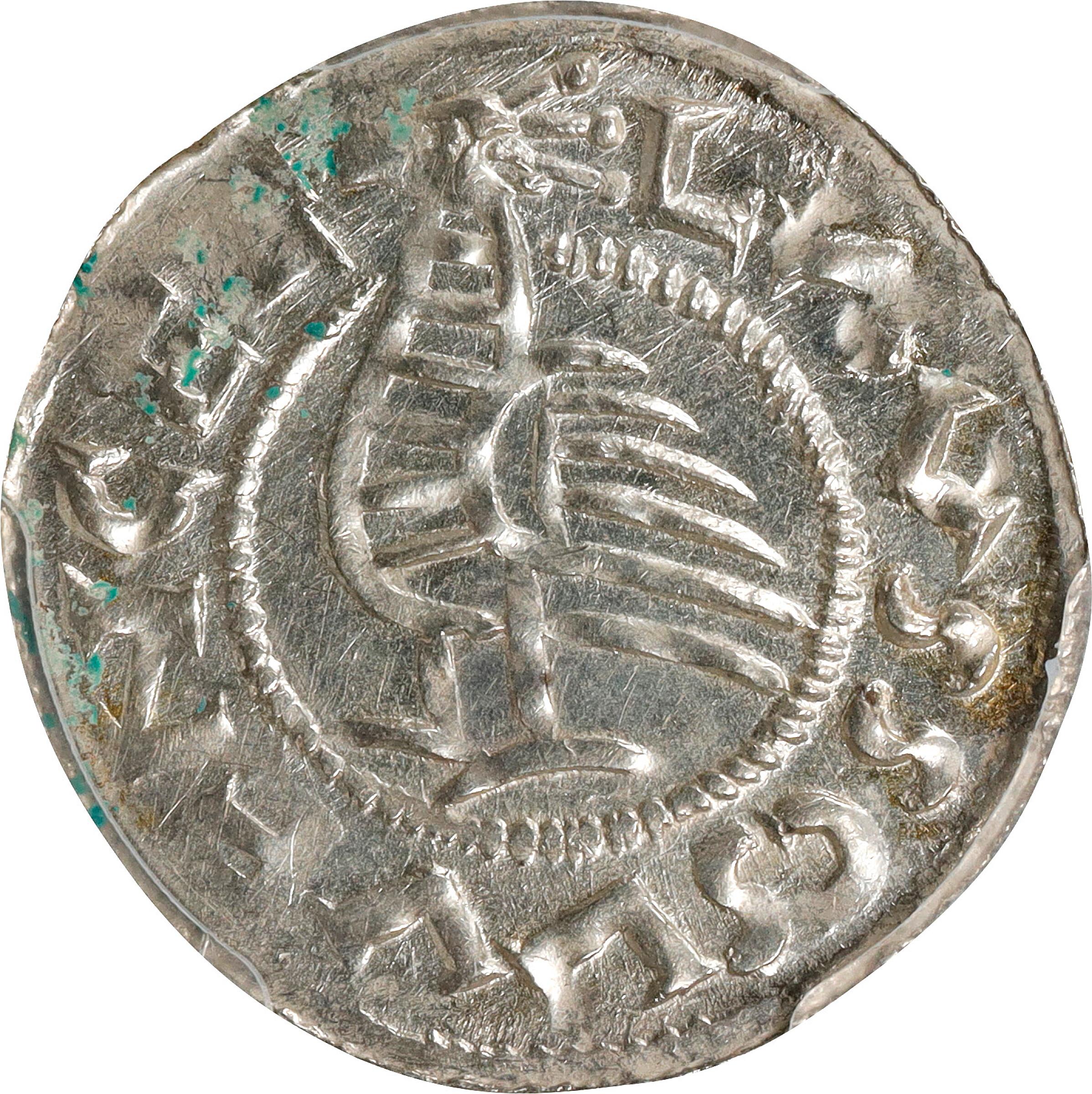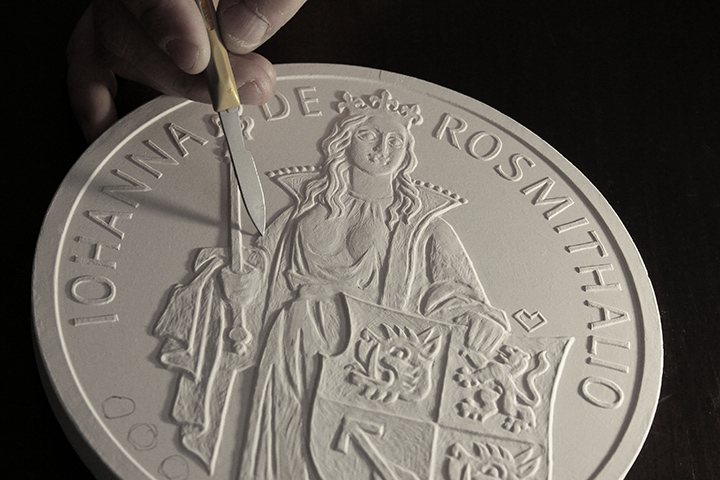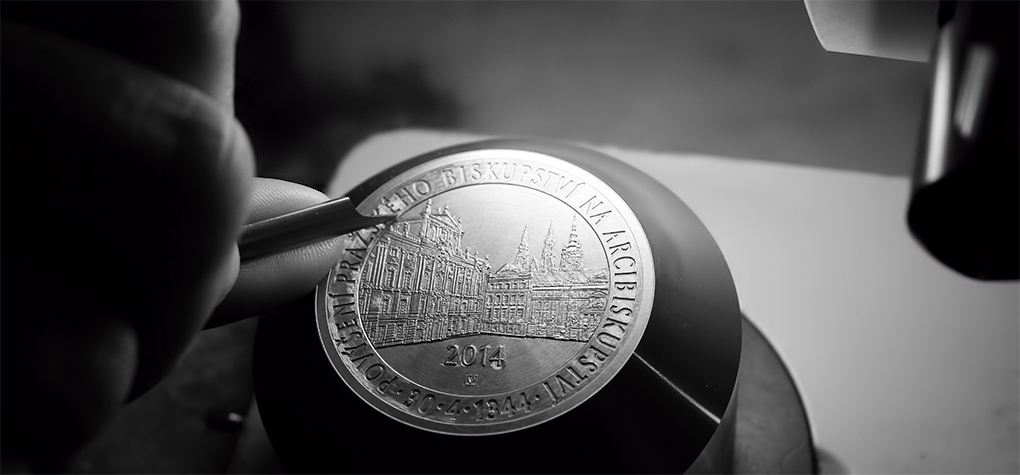Great Facts For Cnc Machining Prague Mint Coins
Why Is A Gold-Colored Coin Or Medal 3d Modeled From A Plaster Cast?Scanning a maquette for gold coins and medals needs special equipment. It records all dimensions of the model, including details and physical aspects of the model. The digital replica serves a variety of functions during the process of production.
3D Scanning - High-resolution scanners capture physical dimensions and detail of the model. The scanners employ various techniques including laser scanning, or structured light, to record precise measurements and geometry.
Surface Information Capture- The scanner projects light or laser beams onto the model's surface. The scanner tracks any reflections or distortions created by the laser beams and therefore captures the surface details of the plaster model.
Data Collection- As the scanner travels over the model, it gathers a huge amount of points, creating an electronic representation of the model's shape as well as contours and other details.
Conversion into a 3D Model. The collected data is processed by specialized software, which transforms it into an electronic 3D model. This model is a replica of the physical dimensions and features of the maquette made of plaster.
What is the reason to create an Digital 3D Model
Digital 3D models are accurate in replicating the dimensions and details of physical models. It is crucial to keep this accuracy in order to make sure that the final design of the gold coin or medal corresponds to the original.
Digital models are easily modified and refined. Designers are able to modify 3D models without altering their original plaster maquette.
Compatible with manufacturing processes- Digital 3D designs are compatible with various manufacturing techniques like CNC machining or 3D Printing and make it simpler to create molds or dies for large-scale production.
Digital 3D designs can be archived and used as documentation. They can be stored digitally as a reference for the future, for reproductions, or for preserving history.
Through scanning and generating a 3D model of the plaster model manufacturers and designers can speed up the manufacturing process and ensure the accuracy and authenticity of replicating the original design. Read the most popular Scanning and 3D Modeling Prague Mint gold coins blog examples. including gold medals, gold dollar coin, silver double eagle, purchasing silver bars, coin 1, gold coin shops near me, sacagawea gold dollar, 1 ounce of silver, 1 oz gold buffalo coin, sell gold coins and more.

Why Are Dies For Gold Coins Or Medals Vacuum Hardened?
Vacuum hardening is a procedure that involves exposing dies high temperatures and a controlled atmosphere in a furnace. This article provides an overview of the procedure of vacuum hardening for dies.
Diets for striking medals or coins are clean and free of contaminants.
Moving into Vacuum Furnace
The dies will be placed in a vacuum chamber that is a specially designed heat-treatment room that can create vacuum.
Evacuation with Airplane
Vacuum furnaces draw air out of chambers, resulting in an oxygen-free environment. This is done to avoid the formation of oxidation and to ensure uniform heat treatments.
Heating Phase
The furnace is heated to the temperature required for hardening the dies. The temperature range will be determined by the material type and the process of hardening.
Soaking at high temperatures
Die dies need to be kept at the highest temperature for a specified period of time in order for the material to achieve and maintain its desired hardness.
Cooling or quenching
After the soaking phase it is possible to rapidly cooled using specialized methods. Rapid cooling assists in locking in the desired hardness and strength in the metal.
Tempering (Optional).
In certain cases, process of hardening can be then followed by a tempering process. The dies are reheated at a lower temperature in order to ease internal stress and increase durability, while preserving hardness.
Quality Control and Inspection
To make sure they meet the hardness and strength requirements the dies that are hardened undergo an exhaustive inspection and quality test.
Post-Treatment Handling-
The dies, after the process of vacuum-hardening is completed, can be further processed using polishing and coating, before they are utilized in the strike of coins or medals process.
Vacuum hardening enhances the life, toughness and wear resistance of the dies that are used to create gold medals or coins. This process, which creates a safe atmosphere free of airborne pollutants, assures that dies are hardened consistently and safely, which improves both the quality and durability of the products. Check out the best vacuum hardening Czechoslovakia gold medals website tips including george washington gold dollar coin, gold bars for sale near me, krugerrand coin, gold apmex price, 1 0z gold price, gold coins for sale near me, canadian gold maple leaf, 1 10 oz gold coin, gold coin 24k price, buy gold coins and more.

Why And How Are Gold Blanks Of High Quality Weighed And Measured Prior To The Process Of Minting Begins?
For the purpose of producing gold-plated coins or gold medals which are accurate and consistent gold blanks must be meticulously prepared. The preparation process for gold blanks is described below. The refinement process is generally to meet the purity standards for coinage.
Gold Blank Production- The gold is shaped into blanks by a process called blanking or blank-cutting. Blanking is the process of cutting discs and planchets which are coins in size, made from gold using specialized equipment.
Precision Weighing & Measuring
Weighing Each piece is weighed individually to ensure that it satisfies the criteria to be used for the coin. This ensures each piece has the exact amount of gold for the amount desired.
Measurement - To ensure that there is uniformity, the diameter, thickness overall dimensions, as well as design specifications are observed, each blank is measured with precision instruments.
Inspections and Quality Control
Visual Inspection- Every blank is visually examined to find any surface imperfections, irregularities or impurities which could impact the quality of the final product.
Rejecting Nonconforming Sheets – To maintain consistency sheets that do not comply with the requirements in terms of weight, dimensions or quality are rejected.
Reasons for Preparation
Consistency of the Minting Process - The uniformity of the minting process is ensured by accurately weighing and measuring blanks. A uniform weight and dimension ensures uniformity in the striking. This produces coins or medals that are similar in value and quality.
Affordable Gold Content The exact weight of each blank ensures the gold coin or medal will contain the quantity of gold designed, ensuring the purity and accuracy.
Uniform Blanks - Prevent variations of weight or size that could affect the coin’s or medal’s value and legality, or its suitability for circulation or for commerce.
Quality Assurance- Strict quality control measures throughout the preparation of blanks ensure that only the highest-quality, defect-free blanks are used in the process of minting, thus reducing the possibility of defects in the final product.
Legal Conformity - It is crucial that coins for purpose of circulation or commemoration adhere to specifications and meet the legal specifications.
The preparation of high-quality blanks using accuracy and consistency is a crucial step in the minting procedure. This will ensure the production of gold coins that are precise and medals that are of high in value and conform to the law. Follow the recommended gold blanks for Prague Mint gold medals blog recommendations including 2000 sacagawea, price of 5 dollar gold coin, silver double eagle, old silver coin, gold coins for sale near me, 2000 sacagawea, 2000 sacagawea, 1 oz gold buffalo coin, guardian angel coin, gold quarter and more.

How Do Gold-Plated Medals Or Coins Go Through Quality Checks To Ensure They Conform To Specifications??
Following minting, gold coins or medals undergo rigorous quality checks to ensure adherence to specifications, accuracy, and surface quality. These checks involve several steps Visual Inspection-
A trained inspector visually inspects each coin or award to identify any surface imperfections or imperfections. They will look for any imperfections, scratches or marks which could impact the appearance or value of a coin.
Dimensions and weight
Each medal or coin is weighed and measured to make sure it is in compliance with the specified weight and diameter, thickness, and overall dimensions according to the specifications of the design. Any deviations could signal that there is a problem with the design.
Metal Purity & Composition
Quality checks are a way to verify the purity and gold content of the medals or coins with various testing methods such as X-ray fluorescent (XRF) analysis or chemical assays. The gold content is inspected to ensure they meet quality and quantity standards.
Edge Inspection
The inspectors inspect the edges to look for any irregularities, consistency and the reeding. The edge of the medal or coin is an essential location to add security characteristics and design elements.
Strike quality
The strike's quality including the clarity and sharpness of the design's details, relief, and overall appearance is evaluated to ensure that the strike is consistent throughout all the minted pieces.
Proofing and Minting Errors
For special editions or proof coins, a thorough inspection is carried out to determine any minting errors, flaws or other discrepancies that could influence the value of the coin's collectible.
Packaging and Presentation-
The quality inspections also extend to the packaging and presentation of coins or medals, making sure that they are properly encapsulated, stored or presented in cases or holders without damage or contamination.
Random Checks and Sampling-
Random sampling or checks are conducted throughout batches to ensure the quality standards are met consistently throughout the minting process.
Documentation and compliance
Every quality check is documented to ensure compliance with the regulations in the field of minting standards, as well as certification specifications. These records are used as evidence of the coin's authenticity and quality.
Rejection of non-conforming items
Rejecting any medals or coins that aren't up to standards is a smart way to ensure the quality and integrity of the merchandise.
The mints and the certification bodies ensure the gold coins or medals they create are in compliance with the required standards for their authenticity, purity, appearance and value. This ensures investors, collectors, and customers that the products they purchase are authentic and of the highest standard. Have a look at the top Prague Mint gold medal quality control website tips. including gold krugerrand, gold 1 dollar coin, 1 10 oz american gold eagle, gold bullion gold, congressional gold medal, gold eagle coin, krugerrand gold coin, coin buy silver, chinese coins, gold and silver dealers near me and more.
